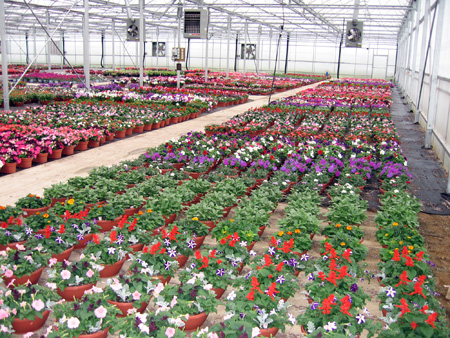Tips on holding greenhouse crops
When shipping slows down, here’s what you can do to hold plants in the greenhouse.
The extended period of cloudy, wet weather has delayed shipping for many greenhouse growers in Michigan. This, obviously, presents problems – crops are ready to ship but the market is not ready to receive them. That problem is amplified because there isn’t space for the next crop to be grown. Growers have a tough decision: either hold crops, hoping that their quality will be sufficient when demand returns, or dump plants to make space for the next crop.

Holding plants in a greenhouse.
Here are some tips on holding plants in the greenhouse. More complete information can be found in a GPN magazine article I authored in April 2008 titled Extending holding time for crops.
Lower the temperature
By far, the most effective strategy to hold crops is to lower the growing temperature. If we think only about the crops that are being held and ignore other crops that are in the same greenhouse, then a desirable temperature is 45 to 50°F for cold-tolerant crops and 55 to 60°F for cold-sensitive crops. Be especially frugal with water and maintain good air movement to help prevent disease problems.
Apply a PGR as a spray or sprench
Some plants become unmarketable because they have become elongated and floppy in their containers. To help prevent this problem, a plant growth retardant (PGR) can be applied to inhibit subsequent elongation of leaves, stems and flowers. For plants intended for the landscape, sprays or light sprenches are recommended. For potted plants, drenches are acceptable and potentially desirable because a more long-term effect may extend their attractiveness.
Pinch plants when desperate
If you know that plants can or will need to be held for several weeks, you may consider pinching or cutting the plants back to remove flowers and elongated shoots. There are several downsides to this, including the additional labor and time required. Generally, crops with short production times can more readily be pinched because their re-bloom time is relatively short.



 Print
Print Email
Email




